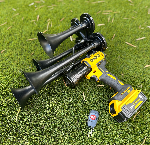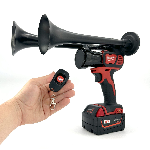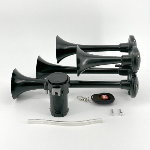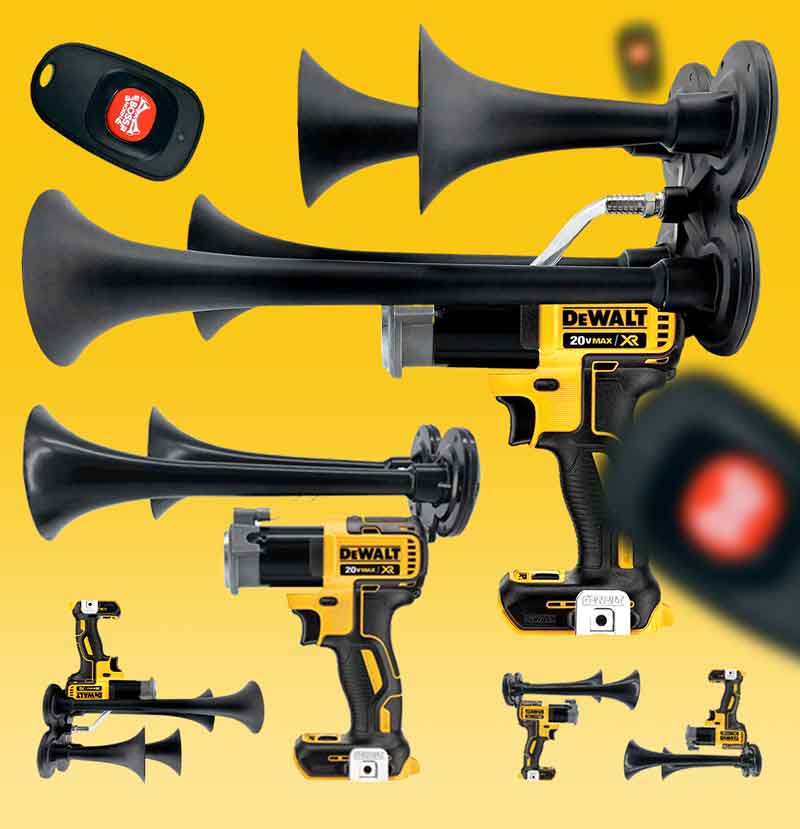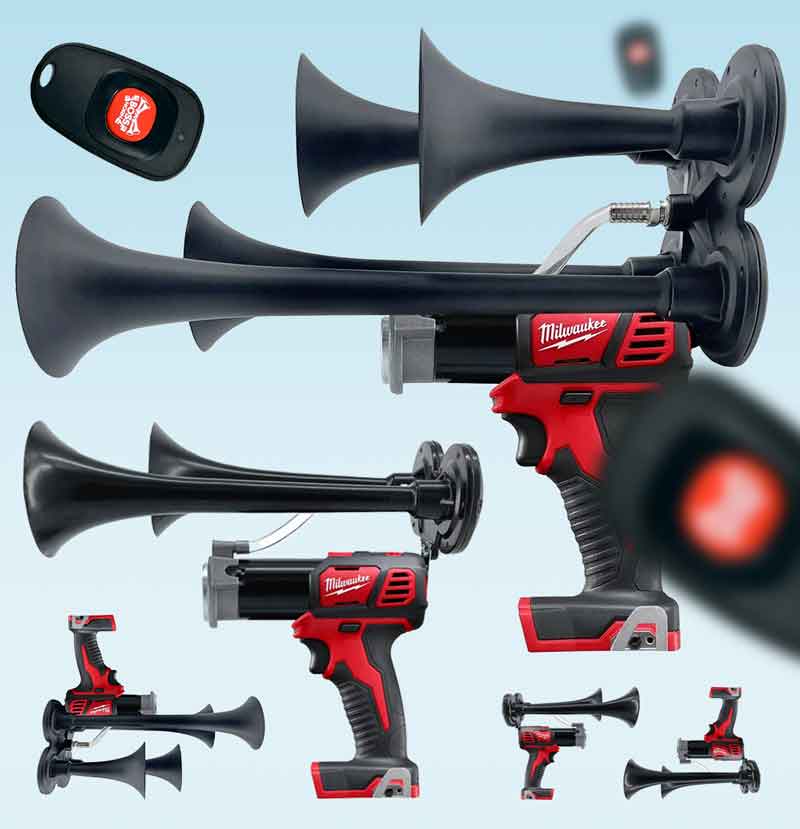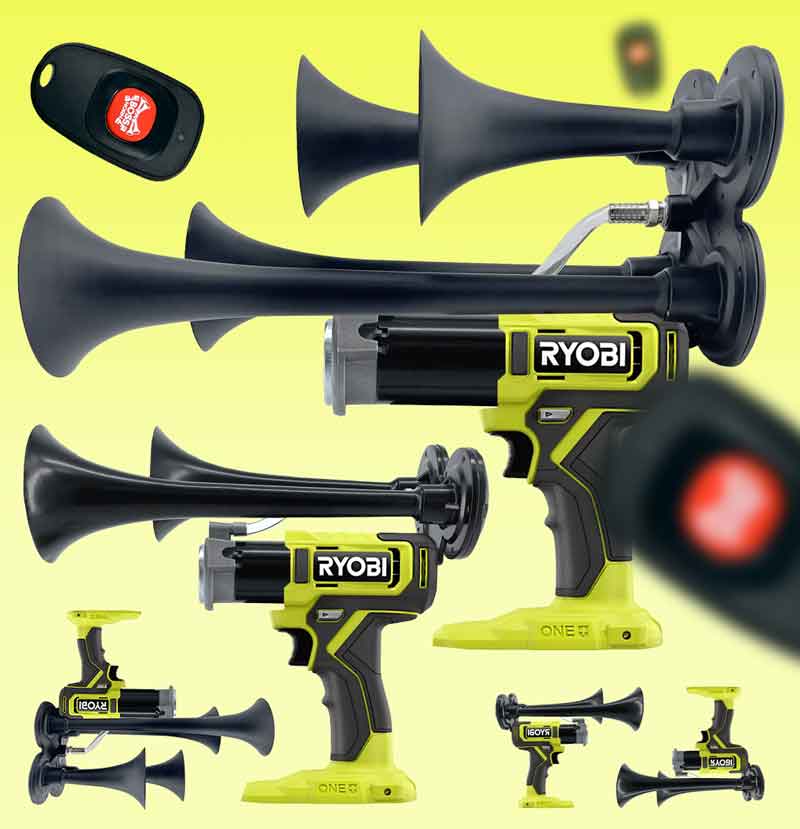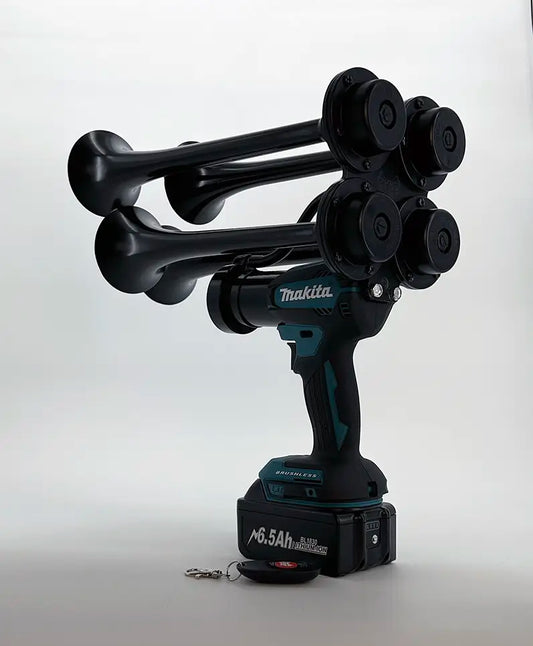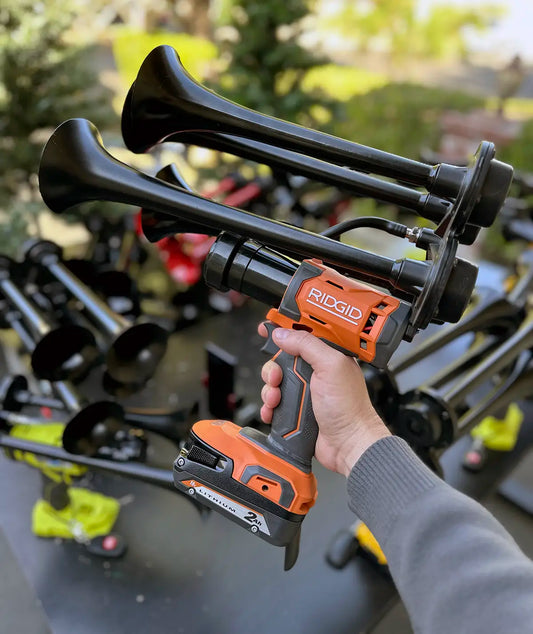Did you know that the decibel level of a train horn can reach up to 150 decibels? To put that into perspective, a normal conversation typically registers around 60 decibels. Trains have been an integral part of transportation for centuries, and their horn has played a crucial role in ensuring safety on the tracks. Originally, train horns were manually operated by train conductors, using a lever to produce a loud sound. However, with advancements in technology, train horns have evolved into extremely powerful devices capable of alerting nearby pedestrians and vehicles of an approaching train.
The use of a train horn serves as a vital safety measure, especially at railway crossings where accidents can have dire consequences. According to recent studies, over 2,000 collisions occur at railway crossings each year, resulting in numerous fatalities and injuries. The loud and distinct sound emitted by train horns serves as a warning signal, notifying drivers and pedestrians to stop, look, and listen before proceeding. With such high stakes involved, it is imperative to ensure that train horns are not only effective but also impossible to ignore.
Over the years, engineers and scientists have worked to improve train horn technology, amplifying the sound to increase its reach and audibility. Sophisticated horns are equipped with powerful compressors and diaphragms, providing a loud and piercing sound that can be heard several miles away. This advancement has considerably contributed to reducing railway accidents and saving lives. Furthermore, many modern train horns are specifically designed to emit a distinct pattern of blasts, alerting pedestrians and motorists of an approaching train and preventing any confusion.
Despite the efforts made to enhance train horn technology, challenges still arise due to the presence of ambient noise in urban areas. Traffic, construction, and other environmental factors can often drown out the sound emitted by a traditional train horn. To address this concern, scientists are exploring alternative solutions such as directional horns that focus the sound in a specific direction, thereby increasing its audibility. This approach could significantly improve safety at railway crossings in densely populated regions and reduce the risk of accidents caused by loud background noise.
In conclusion, train horns have come a long way throughout history, evolving into highly effective safety devices. With their powerful sound, they warn pedestrians and vehicles of imminent danger, contributing to the prevention of accidents at railway crossings. The ongoing advancements in train horn technology demonstrate the commitment to continuously improve safety measures and reduce the risk of collisions. By incorporating innovations such as directional horns, engineers aim to overcome challenges associated with ambient noise, ensuring that the warning signal of an approaching train reaches its intended recipients, thereby minimizing the potential for accidents.
What is the Purpose of an Extremely Loud Train Horn and How Does It Benefit Railways?
An extremely loud train horn serves as a vital safety mechanism and communication tool within the railway industry. It is designed to emit a piercing sound that alerts pedestrians, motorists, and other nearby trains to the train's presence, ensuring their safety and preventing accidents. Additionally, the loudness of the train horn allows train operators to communicate important signals or warnings to their fellow train drivers. In the following sections, we will delve deeper into the significance, advantages, and various aspects related to the use of extremely loud train horns in railway operations.
Types of Train Horns
Train horns come in various types, each with its own unique sound and purpose.
- Air horns: Air horns are the most common type of train horn. They use compressed air to produce a powerful and loud blast. These horns are typically mounted on trains and are known for their distinctive sound.
- Electric horns: Electric train horns are another popular option. They use an electrical current to create sound vibrations, resulting in a loud and sharp tone. Electric horns are often used on smaller trains or for applications where space is limited.
- Steam whistles: While not as commonly used today, steam whistles were once a popular type of train horn. These whistles use steam pressure to produce a loud and resonant sound. They often create a nostalgic and classic train sound.
Usage and Regulations
Train horns serve an important purpose in ensuring the safety of both pedestrians and motorists around railroad crossings. The loud sound alerts people of an approaching train, giving them time to move away from the tracks.
However, the loud noise generated by train horns can also be a nuisance, particularly for residents living near rail lines. To address this issue, many countries and localities have implemented regulations and guidelines regarding train horn usage.
In the United States, for example, the Federal Railroad Administration (FRA) regulates train horn use through the Train Horn Rule. This rule mandates the sounding of train horns at designated crossings, but also allows for the establishment of quiet zones where train horns are not required.
Benefits of Loud Train Horns
Despite the potential for noise-related concerns, loud train horns offer several important benefits:
- Safety: The primary purpose of train horns is to alert people of an approaching train, reducing the risk of accidents at railroad crossings.
- Visibility: The sound of a loud train horn can be heard from a considerable distance, increasing visibility and awareness of an approaching train.
- Emergency situations: In emergency situations or when a train operator needs to quickly attract attention, a loud train horn can be an effective signal.
Statistics
According to the National Highway Traffic Safety Administration (NHTSA), there were approximately 2,214 train-related crashes in the United States in 2019. These crashes resulted in 819 fatalities and 1,084 injuries.
While it's difficult to determine the specific impact of loud train horns on these statistics, their use remains an essential safety measure in preventing accidents and protecting lives.
https://youtube.com/watch?v=CQMe19m40bQ
1. What are the characteristics of a train horn that produces a powerful sound?
Train horns that generate a significant level of volume possess certain notable traits. Firstly, they are designed with specialized air compressors that generate a high pressure of air for producing the sound. Additionally, these horns feature a large diaphragm or resonating chamber, which allows for the amplification of the sound waves produced. Lastly, the construction materials used for train horns are often robust and durable to withstand the intense vibrations and pressure produced when generating the powerful sound.
Important information:
1. Train horns require specialized air compressors.
2. They feature a large diaphragm or resonating chamber.
3. Train horns are constructed using robust materials.
2. How is the loud sound of a train horn produced?
The production of a loud sound by a train horn is achieved through a combination of factors. Firstly, a train horn is connected to an air supply system, which provides the necessary air pressure for operation. As the air is released through a solenoid valve, it flows into the resonating chamber or diaphragm, causing it to vibrate rapidly. These vibrations then propagate as sound waves, generating the powerful and attention-grabbing noise characteristic of a train horn.
Important information:
1. Train horns rely on an air supply system.
2. Vibrations caused by the air flow produce sound waves.
3. The loud noise is a result of the rapid vibrations of the resonating chamber or diaphragm.
3. Are train horns regulated to ensure they meet specific sound requirements?
Yes, train horns are subject to regulations to ensure they adhere to specific sound requirements. These regulations are put in place to ensure the safe operation of trains and to minimize noise pollution for surrounding communities. The sound limitations for train horns vary depending on the jurisdiction and type of railway operation. However, in general, train horns must meet specific decibel levels at certain distances to prevent excessive noise disturbance.
Important information:
1. Train horns are regulated to ensure safety and minimize noise pollution.
2. Different jurisdictions may have varying sound limitations.
3. Compliance with decibel levels is essential to prevent excessive noise disturbance.
4. What are the safety reasons behind the use of loud train horns?
The use of loud train horns serves several crucial safety purposes. Firstly, they alert pedestrians and motorists of an approaching train, providing ample time for them to clear the tracks and stay out of harm's way. Additionally, the volume and distinctiveness of train horn sounds make them easily recognizable, allowing people to associate the noise with the presence of a train. Moreover, in adverse weather conditions or areas with poor visibility, the loudness of train horns helps convey the train's presence, preventing accidents and ensuring the safety of all individuals in the vicinity.
Important information:
1. Loud train horns warn pedestrians and motorists of approaching trains.
2. The volume and distinctiveness make train horns easily recognizable.
3. Train horns ensure safety in adverse weather conditions or poor visibility.
5. Can the loudness of train horns be adjusted or controlled?
Yes, the loudness of train horns can be adjusted or controlled to some extent. Proper maintenance and adjustment of the air supply system, including the valves and compressors, can influence the volume produced by the horn. Additionally, some modern train horn systems are equipped with adjustable sound levels, allowing operators to modify the output depending on the specific requirements of their operating environment. However, it is important to note that train horns must still meet the regulatory sound limitations to ensure safety and prevent excessive noise disturbance.
Important information:
1. Maintenance and adjustment of the air supply system can affect the horn's volume.
2. Some train horn systems have adjustable sound levels.
3. Regulatory sound limitations must still be observed and met.
Conclusion
In conclusion, the extremely loud train horn is a critical safety feature that plays a vital role in preventing accidents and ensuring the well-being of passengers and pedestrians. It serves as a warning signal for everyone in the vicinity of a train, alerting them to its presence and potential danger. The train horn's piercing sound can be heard from a considerable distance, providing ample time for individuals to react and move away from the tracks.
One key insight is that the extremely loud train horn is meticulously designed to meet specific requirements and regulations. Its volume and pitch are carefully calibrated to cut through ambient noise, enabling it to grab attention amidst the hustle and bustle of urban environments. The horn's sound is distinctive, easily distinguishable from other noises, which helps prevent confusion and ensure its effectiveness.
Another important point to note is that the extremely loud train horn is not used indiscriminately. Train operators are trained to deploy the horn judiciously, primarily in situations that warrant immediate alerting, such as approaching grade crossings or when there is a potential collision risk. This prudent usage ensures that the horn maintains its effectiveness and prevents it from becoming a constant noise nuisance for communities residing near rail tracks.
The extremely loud train horn's impact extends beyond just immediate safety measures. It also contributes to a sense of familiarity and awareness among people living near railways, reminding them to be cautious and mindful of their surroundings. This heightened awareness plays a crucial role in preventing accidents and promoting safer behavior around railway infrastructure.
Overall, the extremely loud train horn is a powerful tool and an integral part of railway operations. It safeguards lives, reduces the risk of collisions, and helps maintain safety at grade crossings. Its unique sound and purposeful application make it an essential component of the train's communication system, ensuring that the message of caution is effectively conveyed to all those who share the railway environment.


